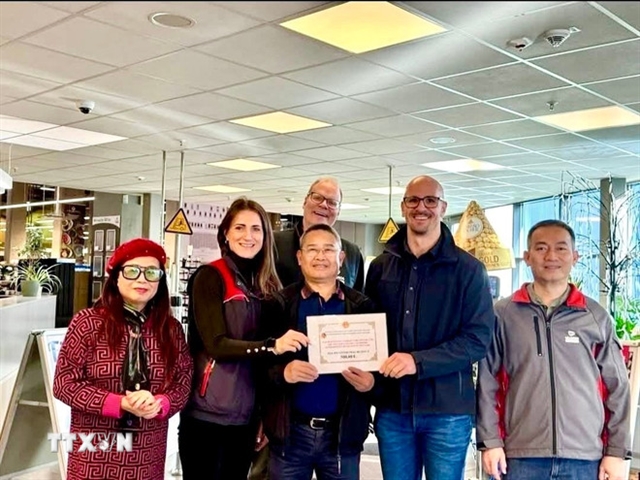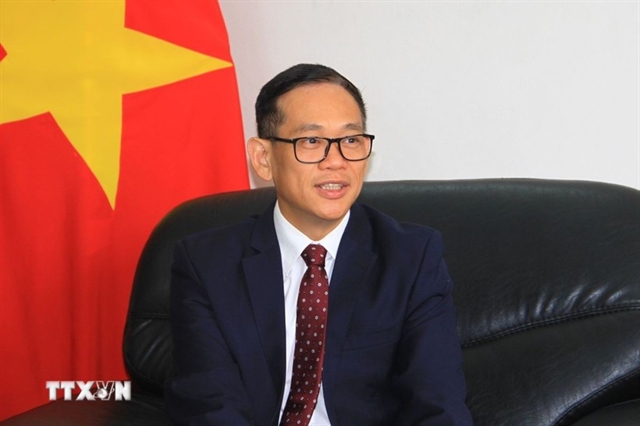 Society
Society

As the water supply and drainage sector gears towards the Fourth Industrial Revolution, there is an urgent demand for the training of highly skilled engineers and system operators who are capable of adapting to constantly changing technology, according to Việt Nam Water Supply and Sewerage Association (VWSA).
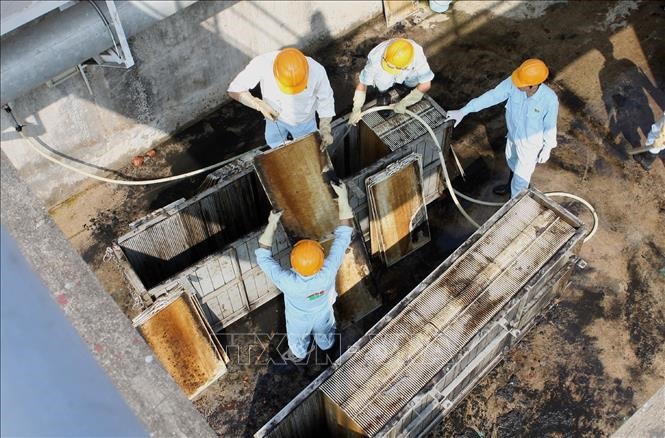 |
| Workers at a waste water treatment station in Hà Nội’s Thăng Long Industrial Zone. – VNA/VNS Photo Minh Đông |
HÀ NỘI — As the water supply and drainage sector gears towards the Fourth Industrial Revolution, there is an urgent demand for the training of highly skilled engineers and system operators who are capable of adapting to constantly changing technology, according to Việt Nam Water Supply and Sewerage Association (VWSA).
The demand for a high-quality labour force has been on the rise as the water sector has started using advanced technologies such as renewable energy technology, environmentally friendly materials and environment monitoring technology with the help of the Internet of Things. These technologies collect and process data to issue early warnings of natural disasters.
VWSA predicts that by 2020, the country’s 63 provinces and cities will need 8,500 engineers. Water supplies, drainage systems and waste water treatment stations will need more than 8,000 technical operators.
Quality is required as well as quantity. Workers must be creative and have the skills to apply new technologies and work in a virtual reality environment.
Although it is predicted that the Fourth Industrial Revolution will take the jobs of labourers by replacing workers with technological solutions, Mai Thị Liên Hương, head of administration of technical infrastructure under construction ministry, said the nation’s success still hinges on people’s ability to innovate rather than technology.
Workers’ role in the production process will shift from manual labourers to supervisors and decision makers, according to the Science and Technology Department of the Ministry of Information and Communications.
According to Cao Lại Quang, head of VWSA, the sector’s labour force demand has surged due to increasing demand for water supply.
In Việt Nam, there are 111 enterprises supplying clean water for urban areas; 71 companies working on water drainage and urban waste water treatment and 560 water stations. There are also more than 16,000 water supply facilities for rural areas. These facilities employ about 70,000 workers nationwide.
Quang said that the sector’s labourers are weakest in foreign language and information technology skills.
Feedback from employees shows most graduates need training to adapt to companies’ requirements.
More than 92 per cent of engineers holding doctorates or higher degrees work in big cities like Hà Nội and HCM City, while less than one per cent work in the Central Highlands, northwest and southwest regions.
Lacking a high-quality workforce is one of the biggest challenges the water sector has faced in the transition to the Fourth Industrial Revolution, Quang said.
He said it is important to predict the labour market’s demands. Schools and companies need to apply new technologies in training and work together to offer students workplace training so they can prepare to enter a changing industry.
According to Associate Professor Ứng Quốc Dũng, deputy head of VWSA, Industry 4.0 brings both challenges and opportunities. New technologies are predicted to change the labour market, increase inequality, accelerate technological transfer and apply advanced technology in the water sector. — VNS
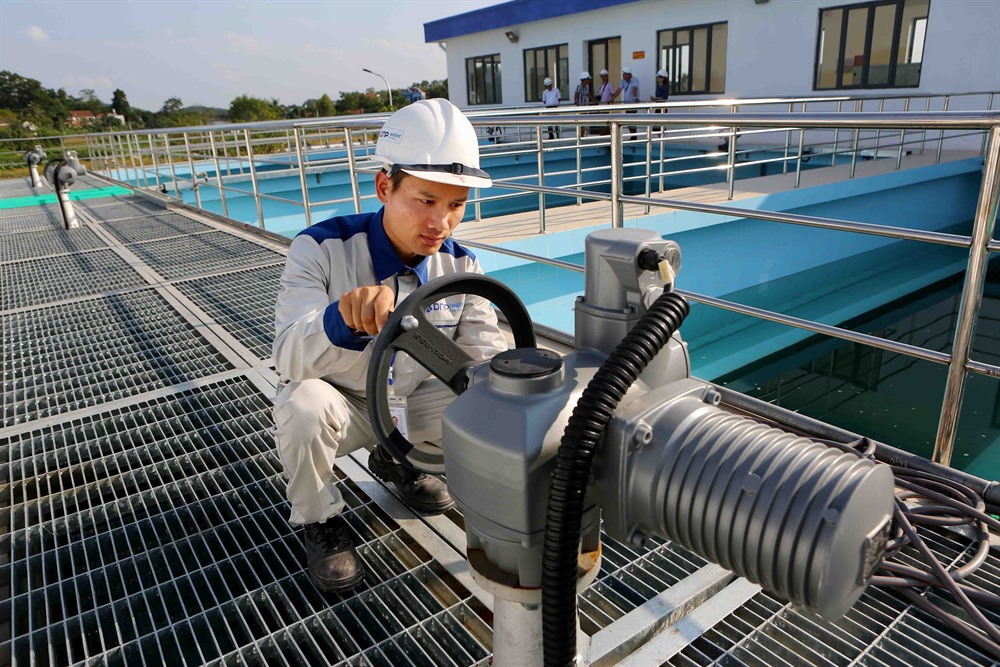 |
| An engineer at the DNP Bắc Giang water station in Bắc Giang Province. There is a demand for highly skilled engineers and operators who are capable of adapting to constantly changing technology. — VNA/VNS Photo Thành Đạt |
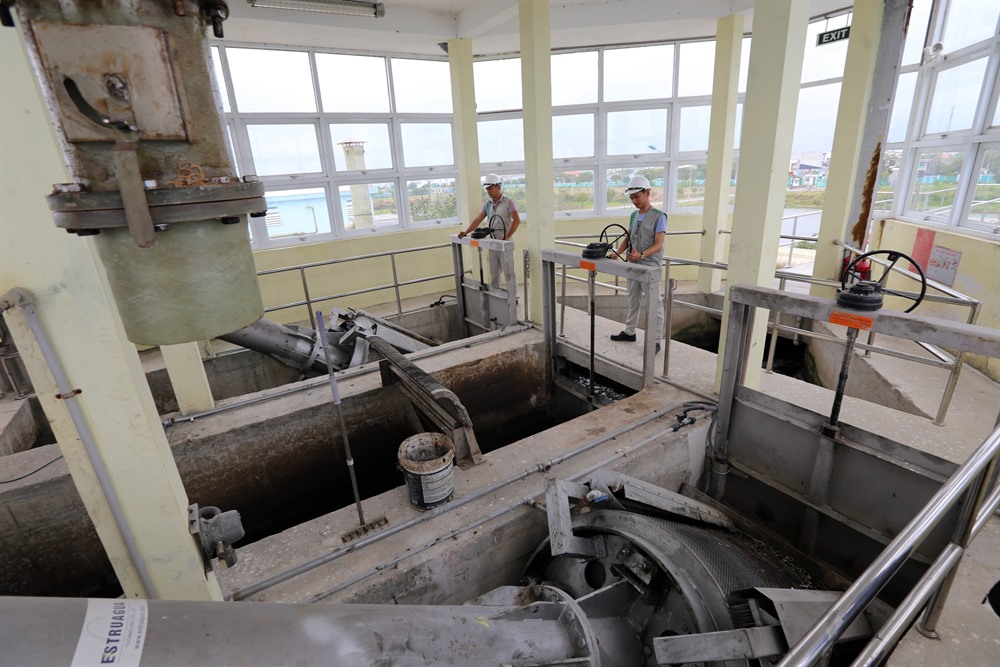 |
| Workers at Hòa Xuân waste treatment station of central Đà Nẵng City operate the system. — VNA/VNS Photo Trần Lê Lâm |


